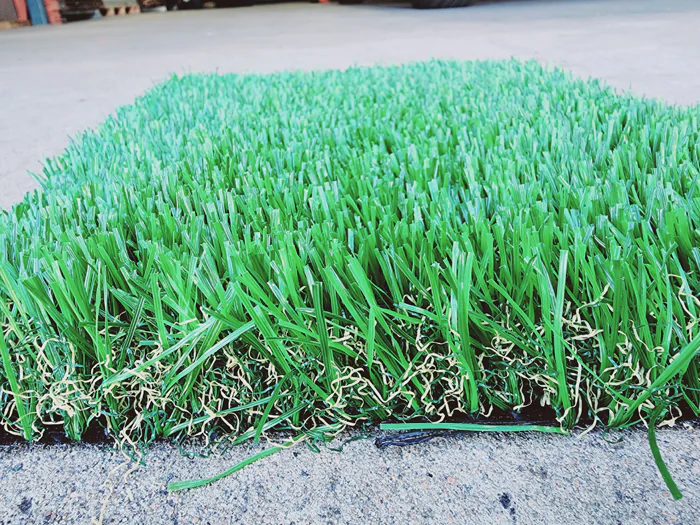Bid farewell to Cutting the lawn: The Advantages of Artificial Turf

Picture never having to mow your lawn again. Homeowners, the notion of devoting weekends cutting grass, struggling with weeds, and providing a lush green lawn is an old story. The arrival of synthetic turf has revolutionized how we perceive about our outdoor spaces, making it an more popular choice for numerous folks. But what makes artificial turf gaining traction, and what are the true perks that follow it?
Considering time and cost reductions to eco-friendly advantages, synthetic lawns offer a range of benefits that real grass simply cannot compete with. Individuals are discovering that fake grass is not just a viable option; it can boost their curb appeal, provide a harm-free area for kids and pets, and considerably lessen the environmental impact associated with caring for traditional lawns. As we explore the top reasons why synthetic turf could be the best lawn decision, you may find that this innovative lawn solution could be the perfect match for your garden.
Top Pros of Artificial Grass
Fake grass has gained great recognition among property owners for multiple convincing factors. One of the key significant advantages is the considerable decrease in maintenance. Traditional lawns necessitate regular trimming, watering, and feeding, which can be labor-intensive and financially draining. With artificial turf, you can say goodbye to the mower and the burden of upkeep, allowing you to enjoy your garden without the arduous responsibilities that come with real grass.
In conjunction to saving you time, artificial grass offers significant economic advantages. https://output.jsbin.com/jayajuyegu/ see a marked decrease in water bills since synthetic lawns do not use irrigation. Furthermore, the abolition of maintenance chemicals such as feeding products and pesticides translates into lasting financial benefits. This makes artificial turf both a more user-friendly option but also an financially smart one, providing value over time that natural grass simply cannot compare to.
Another significant benefit of artificial grass is its adaptability and durability. It can withstand heavy tread, making it an perfect solution for families with children or animals. No more muddy patches or worn-out areas; fake grass stays lush along with healthy year-round. This resilience means that artificial grass can be installed in a multitude of environments, from little urban backyards to large estates, ensuring that residents can enjoy a gorgeous lawn regardless of their specific circumstances.

Price and Care Reductions
One of the key reasons residents are shifting to synthetic grass is the considerable cost reductions over time. The upfront investment in synthetic turf may seem more costly than real grass, but when you consider the elimination of recurring expenses—such as mowing, fertilizing, irrigating, and insect management—the long-term financial benefits become clear. Homeowners save both on utility expenses by lowering water use but also on care equipment and labor costs associated with upkeep.
Additionally, synthetic turf requires minimal maintenance compared to natural grass. With try this site for cutting, edging, or pulling weeds, homeowners can free up their weekends and enjoy their outdoor spaces without the task of caring for a traditional lawn. This hands-off appeal not only provides extra leisure time but also removes the recurring costs of hiring lawn care services for maintenance, which makes artificial grass an economically sound choice.
Another aspect to consider is the longevity of synthetic grass. Unlike real grass that can suffer from damage, notably in heavily-used areas, artificial turf is engineered to withstand heavy use. This means less repairs and replacements throughout the years, resulting in additional financial benefits. Regardless of whether in domestic settings or second homes, selecting synthetic grass can yield significant financial savings while providing a continuously lush aesthetic all year long.
Ecological and Aesthetic Benefits
Artificial grass offers significant ecological benefits that contribute to a healthier ecosystem. One of the most apparent advantages is its ability to reduce H2O usage. Traditional lawns require extensive watering, especially in arid regions, whereas artificial grass requires no water, leading to substantial savings and a decreased burden on local water supplies. Additionally, its installation eliminates the requirement for chemical fertilizers and pesticides, promoting a more environmentally friendly landscape without hazardous substances leaching into the soil or nearby waterways.
From an aesthetic perspective, artificial turf provides a persistently lush green look, free from the unsightly brown patches or bald spots that commonly afflict natural grass. This dependable visual appeal enhances curb appeal and makes any yard look manicured and well-maintained year-round. Homeowners no more have to worry about the seasonal fluctuations affecting their lawn's look, ensuring that whether in sweltering heat or chilly months, the grass will remain vibrant and inviting.
Furthermore, fake grass is a practical solution for diverse landscaping requirements. It is not just suitable for home lawns but also excels in high-traffic areas and children's play zones, where real grass finds it hard to thrive. The durability and resilience of synthetic turf make it an ideal choice for urban environments and small spaces, where maintaining a natural lawn can be more difficult. Choosing artificial grass means opting for a versatile, eco-friendly, and visually pleasing lawn solution.
